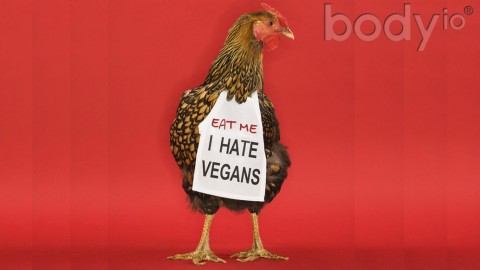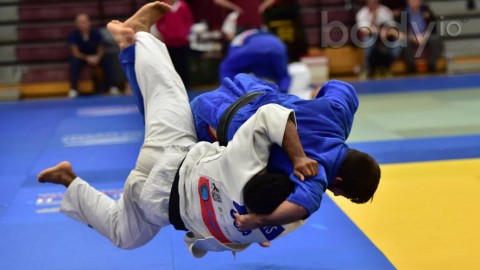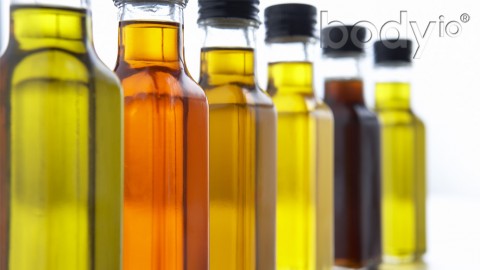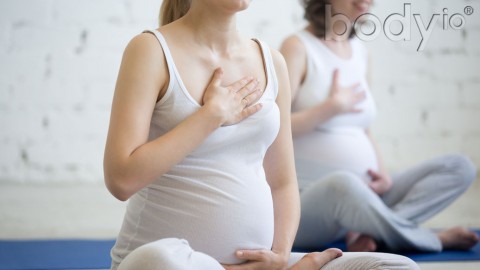ost people can’t remember how the story of Goldilocks and The Three Bears ends. Most people also don’t know the moral of the story, including me. But everyone remembers the basics: an unruly troubled youth, female, ransacks the house of a peaceful family by taking everything that’s “just right”. However you remember the story, it’s that last part, the “just right” that people remember about Goldilocks. The Goldilocks Zone, therefore, is a term that’s understood across cultures and academic disciplines as an interval where everything is just right.
The human body is, at its core, a heat engine; it burns fuel through an incredibly complex regulatory system and converts some of the energy into work and the excess is dissipated as heat. Every heat engine has a Goldilocks Zone for temperatures where it functions best. It runs too hot and the power output goes down. Too cold, it’s the same problem. It needs to be just right.
Cold Calculated Efficiency
Calculating the optimal temperature range for any system is normally an empirical task. Take a set of measurements, plot the data and find the peak value of whatever variable needs optimizing. Optimal power might be the goal, or maybe optimal oxygen efficiency. Optimal power and optimal efficiency will never occur at the same temperature. The world runs on tradeoffs and compromises.
The Goldilocks Zone for human muscle tissue raises some intriguing questions. Peak efficiency—the greatest amount of work done for the amount of oxygen used—requires an internal muscle temperature of 89.6° F (32° C)[1]. Some sort of alarm should sound: that temperature is way below normal body temperature, 98.6° F (37° C). Achieving optimal efficiency would require special equipment. I’ll discuss the potential ramifications.
Power Performance
Just because peak efficiency lies outside our day-to-day physiological temperature spectrum doesn’t mean that everyone should start training in a meat locker. Most animals don’t run at peak efficiency. Most animals, including us, run at peak power. This may be a manifestation of Odum’s Maximum Power Principle (in a nutshell: a complex system will survive longest by maximizing power output instead of increasing efficiency).
The internal temperature for peak power takes some work to get an estimate on. Two studies found internal temperatures ranging from 100° F (38° C) to 101.5° F (38.6° C) increased power output (and efficiency a bit)[2-3], but this doesn’t tell us if these represent values where power maximizes. Maybe it’s higher still. Let’s check.
Assuming that, in principle, muscle acts like a heat engine opens the problem to theoretical calculations. I chose to use the biceps as my representative muscle since all the fibers run in the same direction, which means I don’t have to consider as many complications stemming from pennation angles.
Using the formulas for maximum work at a given temperature in idealized heat engines[4] and finding the heat capacity of skeletal muscle tissue[6] along with the other variables (the torque moment of the bicep insertion[5], the estimated mass of an average biceps, the average amount of mass that could be curled, the temperature of the skin…), I calculated peak power at an internal temperature of approximately 101° F (38⅓° C). This is a pretty good match to the studies. Note: this isn’t much higher than body temperature compared with the lower threshold. There’s a reason for this that I’ll discuss later.
Looking at the formula for the upper end of the Goldilocks Zone in [4], leads to some observations and predictions. The obvious observation: the greater the mass of the muscle, the greater the maximum power. It’s less obvious that the peak power depends on the external temperature as well as the internal temperature, a standard feature of heat engines. Peak power also depends on the hydration of the muscle because heat capacity enters into the equation which depends on the water content of the muscle.
There’s value in understanding how well a basic physics equation can describe the complex thermodynamics of muscle, so…
Dehydration
From our model, higher levels of hydration give higher heat capacity, which allows greater power output. Dehydration means lower heat capacity, and lower power output. For dehydration, the key is to understand how heat flow works in an engine, or in this case, the muscle. During dehydration, the thermal conductivity of muscle (how fast the muscle can get rid of heat) is lower[7], allowing greater heat storage per unit time. Because the heat capacity is also lower due to dehydration, the temperature of the muscle raises faster, likely passing beyond our Goldilocks limit.
Simply put: dehydrated muscle gets hot faster and stays hot longer. This shouldn’t affect absolute strength because if the force is slow and steady, the heat has time to dissipate; it should affect explosive power, particularly during successive repetitions. Power is how fast the maximum force can be applied, which requires the production of a lot of excess heat faster, which can no longer dissipate quickly. This is what the research shows: dehydration doesn’t affect strength, but does lower power production[8-12].
Our predictions around dehydration turned out to reinforce our trust in the simple physics model.
Thermal Stress I: Hyperthermia
Looking at thermal stress requires a little more discussion that dehydration. If you think about an object being heated—or cooled—two types of thermal stress occur. The obvious stress is when the thing gets so damn hot it loses integrity and melts. Imagine a glass blower warming up her super-sized glowing gum drop of molten silica. In a biological system, this type of thermal stress could lead to heatstroke or tissue damage.
Problems usually occur much sooner than this. Besides the environment, where muscles can attempt to dissipate heat, the core of the body also acts like a heat sink. The Goldilocks Zone for muscle tissue has a large range, down to 89.6° F (32° C) an all the way up to 101° F (38⅓° C). Working muscle can reach even higher temperatures at the cost of efficiency. Even though the temperature of working muscle can vary so much, the core of the body still tries to maintain the standard 98.6° F (37° C). At a critical core temperature, fatigue sets in.
As the internal temperature of the core and consequently the muscle tissue increases, performance decreases until the muscle responds by shutting down[12-14]. This happens at what can be considered our maximum operating temperature: 103.5° F (39.7° C). After this point, permanent tissue damage and death become a concern.
Again, our simple model still fits with the data. Power drops off if muscle accumulates too much heat and the internal temperature rises above the Goldilocks threshold. And for exercise duration greater than 30 minutes, a lower ambient temperature helps to maintain performance[15-16]. At these durations, the internal muscle temperature has equalized and the muscle can dissipate heat into the environment as fast as it’s generated.
Thermal Stress II: Temperature Gradients
There’s a second type of thermal stress that everyone forgets until they pour cold water into a glass pan fresh from the oven. Depending on how hot the oven was, there’s a good chance the pan will shatter. Part of the pan cooled down too quickly which caused structural changes in one part of the glass too fast for the hotter sections to compensate for. Muscles work the same way.
This is not to imply that muscle can become so unevenly heated or cooled as to explode into shards. But when there is a temperature gradient across a muscle—so one part of the biceps, let’s say, is a different temperature than another part—the work capacity drops. Muscle experiences the same type of thermal stress as a glass pan, although in less spectacular fashion.
Whenever there’s a temperature gradient, the entire muscle only functions as well as the worst part and tries to equalize temperature across the entire muscle[17]. This is an amazing result for a couple of reasons. First, the researchers developed the model with only thermodynamic arguments, much as I did above, and were able to recover what’s known as Hill’s muscle model, which was considered a purely empirical model[18]. After more than 70 years, it now has some theoretical footing.
Second, these results should make anyone hesitant to recommend muscle heating and cooling treatments. Heating or cooling of muscles requires that the muscle body’s temperature is kept even during the process otherwise metabolic stress will ensue[19-20].
Alternatively, if the goal is short duration high impact exercise (like HIIT), we can use this information to our advantage by performing in a hotter environment[21]. This could allow the muscles to achieve a more uniform temperature closer to the Goldilocks threshold before exercise begins. I surmise that this would only work for very short duration very high power type activities.
The Goldilocks Zone
Congratulations. I can’t believe you’re still reading. You’re either a geek or masochist. Either way, it’s time to wrap things up.
This was a brief introduction to the thermodynamics of skeletal muscle tissue, especially in the active state. The Goldilocks Zone runs from 89.6° F (32° C) to 101.5° F (38.6° C), in most training situations, only the higher threshold matters. With ample hydration and wise planning, you’re likely to always be in the Goldilocks Zone.
Not that any of this information is too terribly exciting, but it is necessary background for what comes next.
Part II : I go over the hot topic of heat shock proteins and performance, and I’ll let you in on the gargantuan secret no one’s willing to talk about. Diet also plays a role in the Goldilocks Zone, which I discuss.
Part III: I cover the topic of cryotherapy and athletic performance and the number of ways you can apply it to your own training and recovery.
[expand title=”References (click to expand)”]
- Binzoni T, Ngo L, Hiltbrand E, Springett R, Delpy D. Non-standard O(2) consumption-temperature curves during rest and isometric exercise in human skeletal muscle. Comp Biochem Physiol A Mol Integr Physiol. 2002 May;132(1):27-32.
- Ferguson RA, Ball D, Sargeant AJ. Effect of muscle temperature on rate of oxygen uptake during exercise in humans at different contraction frequencies. J Exp Biol. 2002 Apr;205(Pt 7):981-7.
- Bell MP, Ferguson RA. Interaction between muscle temperature and contraction velocity affects mechanical efficiency during moderate-intensity cycling exercise in young and older women. J Appl Physiol (1985). 2009 Sep;107(3):763-9.
- Long R, Liu W. Maximum work for Carnot-like heat engines with infinite heat source. https://arxiv.org/abs/1406.0631
- Cameron JR, Skofronick JG, Grant RM. Physics of the Body, Revised Second Edition, Chapter 3. Madison: Medical Physics Publishing, 1999. Print.
- IT’IS Foundation. Heat Capacity. https://itis.swiss/virtual-population/tissue-properties/database/heat-capacity/. Last accessed March 28th, 2019.
- IT’IS Foundation. Thermal Conductivity. https://itis.swiss/virtual-population/tissue-properties/database/thermal-conductivity/. Last accessed March 28th, 2019.
- Périard JD, Tammam AH, Thompson MW. Skeletal muscle strength and endurance are maintained during moderate dehydration. Int J Sports Med. 2012 Aug;33(8):607-12.
- Savoie FA, Kenefick RW, Ely BR, Cheuvront SN, Goulet ED. Effect of Hypohydration on Muscle Endurance, Strength, Anaerobic Power and Capacity and Vertical Jumping Ability: A Meta Analysis. Sports Med. 2015 Aug;45(8):1207-27.
- Jones LC, Cleary MA, Lopez RM, Zuri RE, Lopez R. Active dehydration impairs upper and lower body anaerobic muscular power. J Strength Cond Res. 2008 Mar;22(2):455-63.
- Hayes LD, Morse CI. The effects of progressive dehydration on strength and power: is there a dose response? Eur J Appl Physiol. 2010 Mar;108(4):701-7.
- Ftaiti F, Grélot L, Coudreuse JM, Nicol C. Combined effect of heat stress, dehydration and exercise on neuromuscular function in humans. Eur J Appl Physiol. 2001 Jan-Feb;84(1-2):87-94.
- Walters TJ, Ryan KL, Tate LM, Mason PA. Exercise in the heat is limited by a critical internal temperature. J Appl Physiol (1985). 2000 Aug;89(2):799-806.
- Nielsen B, Hales JR, Strange S, Christensen NJ, Warberg J, Saltin B. Human circulatory and thermoregulatory adaptations with heat acclimation and exercise in a hot, dry environment. J Physiol. 1993 Jan;460:467-85.
- Febbraio MA, Parkin JM, Baldwin J, Zhao S, Carey ME. Effect of ambient temperature on metabolic indices of fatigue during prolonged exercise. Med Sci Sports Exerc. 1996 Mar;28:S180.
- MacDougall JD, Reddan WG, Layton CR, Dempsey JA. Effects of metabolic hyperthermia on performance during heavy prolonged exercise. J Appl Physiol. 1974 May;36(5):538-44.
- Baker JE, Thomas DD. A thermodynamic muscle model and a chemical basis for A.V. Hill’s muscle equation. J Muscle Res Cell Motil. 2000 May;21(4):335-44.
- Seow CY. Hill’s equation of muscle performance and its hidden insight on molecular mechanisms. J Gen Physiol. 2013 Dec;142(6):561-73. Review.
- Cheung SS, Sleivert GG. Lowering of skin temperature decreases isokinetic maximal force production independent of core temperature. Eur J Appl Physiol. 2004 May;91(5-6):723-8.
- Enwemeka CS, Allen C, Avila P, Bina J, Konrade J, Munns S. Soft tissue thermodynamics before, during, and after cold pack therapy. Med Sci Sports Exerc. 2002 Jan;34(1):45-50.
- Ball D, Burrows C, Sargeant AJ. Human power output during repeated sprint cycle exercise: the influence of thermal stress. Eur J Appl Physiol Occup Physiol. 1999 Mar;79(4):360-6.
Post Image: Copyright (c) 2012 Dan Osborne Deviant Art
[/expand]













I’ve been looking forward to you covering this topic for a long time! Especially part 3, bringing back Leg day and Basketball has left me frequently sore.
Will stretching fall into the topic of recovery as well?I’m curious if my lack of pliability will come back to bite me. #neveryoga
I should probably write an article about stretching in general for warm up, recovery and performance enhancement. In this series, I want to focus on the advantages and disadvantages of messing with the thermal equilibrium of skeletal muscle tissue.
Very interested in the cryotherapy arcticle. Used to work a job where being cold was part of life. Never been in a situation where I couldn’t out eat my physical activity, with exception to that time.
Hey Kiefer, I’m curious – will we be able to comment on the podcasts via the site as well? Regarding your new projects I really hope you get yourself out there and take advantage of the offers you had since deconstructing health. I noticed Mark Bell reaching out. It would be great to get the mainstream coverage for your software too so I’m rooting for you to get on some of the big audience podcasts out there.
Thanks for all the free content!
You’ll be able to comment on podcasts as well. I’m hoping to do a podcast “tour” soon, not necessarily to promote the software, but rather to get people interested in the upcoming book.